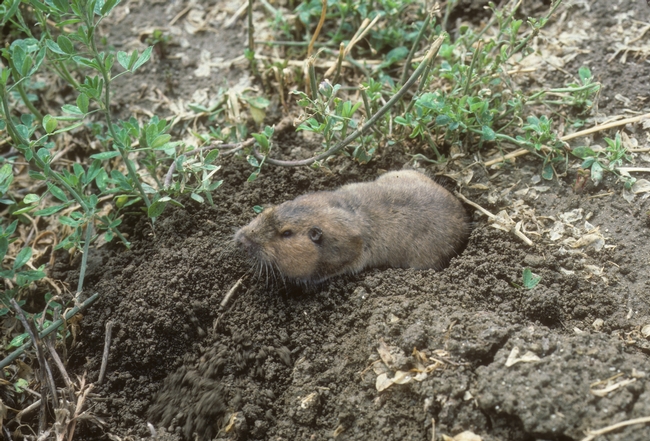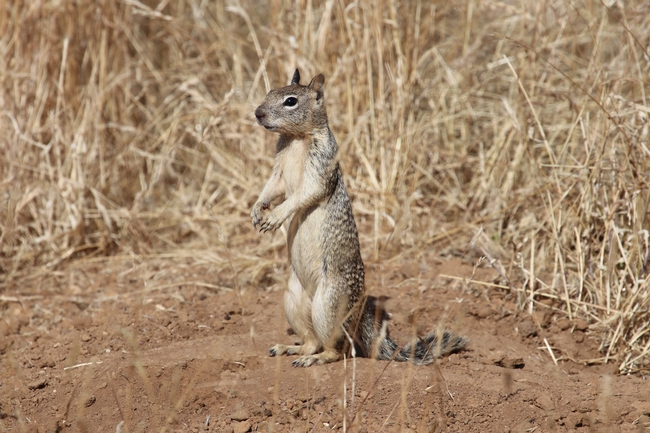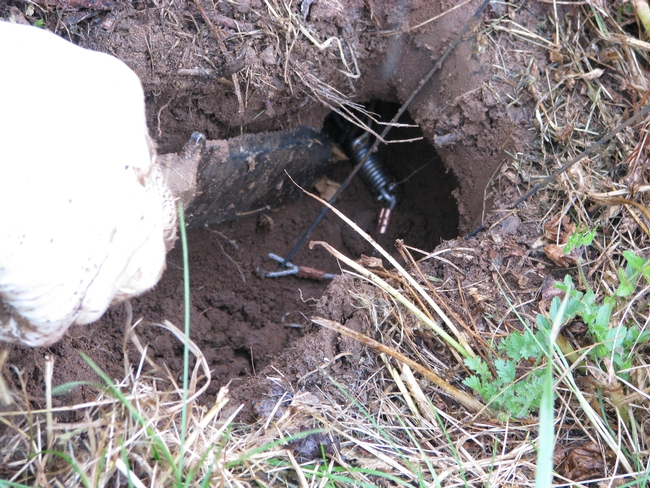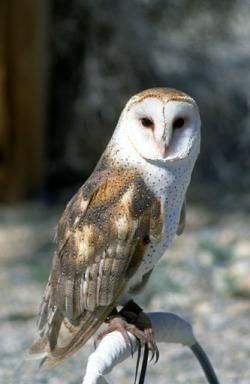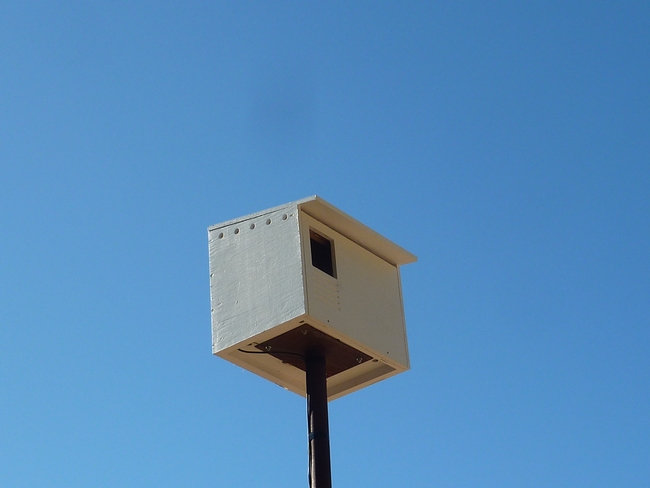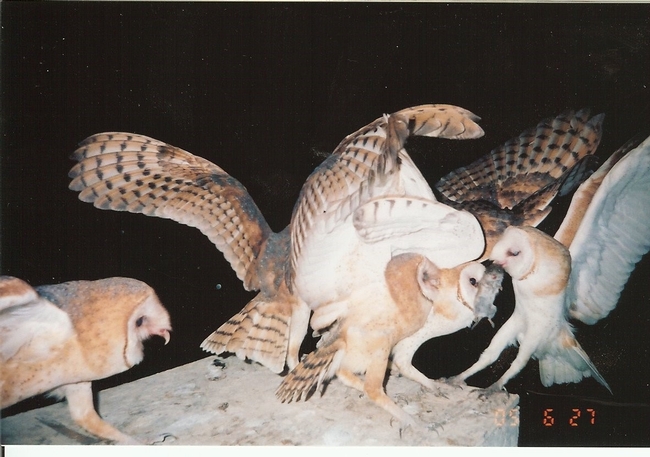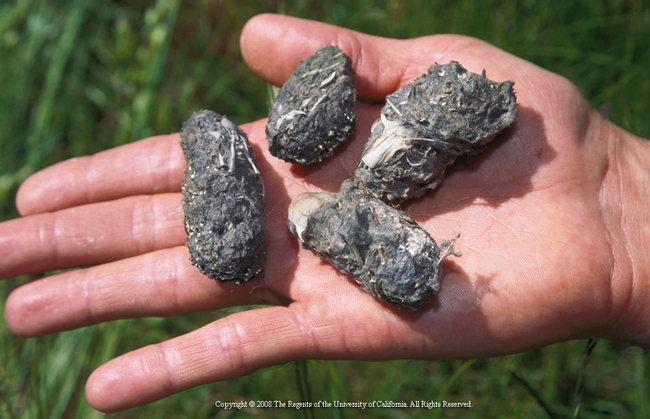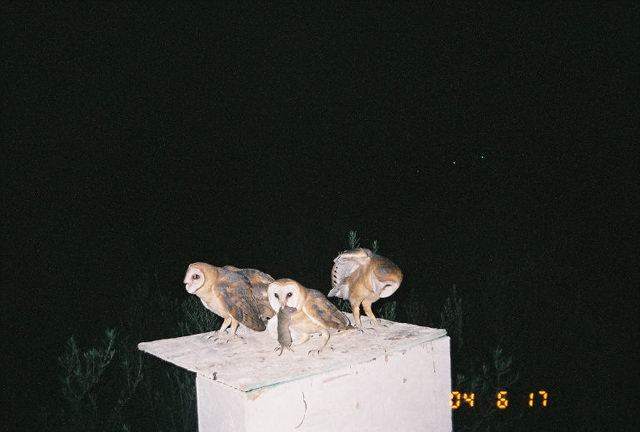Posts Tagged: rodents
New guide helps organic growers manage burrowing rodents
Burrowing rodents can cause extensive and expensive damage to orchards and crop fields. To manage the pests without chemicals used on conventional farms, organic growers can consult a new publication from UC Agriculture and Natural Resources scientists.
“Burrowing Rodents: Developing a Management Plan for Organic Agriculture in California” outlines management within organically acceptable methods using an integrated pest management approach.
California ground squirrels, pocket gophers and meadow voles are the three most common species that cause damage. Squirrels chew on seedlings, fruit and nuts, killing young trees and reducing crop yields. In addition to plants, ground squirrels, pocket gophers and voles can chew on irrigation lines, and their burrow systems can channel water away from plants and erode the soil. The holes and mounds created by burrowing rodents pose hazards to farmworkers and farm machinery.
This publication helps growers identify the rodent species on their properties, their life cycles and tools available to control them.
“Growers can read about how to effectively select and set a range of traps for burrowing rodents,” said co-author Margaret Lloyd, UC Cooperative Extension small farms advisor for the Capitol Corridor. “Traps are an important tool for organic management, but maximizing control comes from integrating knowledge. Here we present information about rodent biology, trap efficacy, biocontrol, habitat management, plant protection and other approaches to collectively manage the pest problem.”
In the publication, Lloyd and Roger Baldwin, UC Cooperative Extension wildlife specialist in the UC Davis Department of Wildlife, Fish and Conservation Biology, review the effectiveness of commercially available traps – where to place the traps, whether to use attractants, and methods of euthanizing the animals.
They also offer cultural techniques for deterring rodents such as flooding fields and deep ripping soil to destroy burrow systems. Crops for orchard floors or cover cropping can be selected and managed to minimize habitat that protects and encourages gophers and voles.
For biological control, they suggest barn owls, raptors and snakes might be able to assist, but warn growers that predators alone will not be able to eat enough of the rodents to reduce the high populations to tolerable levels for many growers.
“Effective management will rely on a suite of tools,” said Baldwin.
The 15-page publication is available for free download at https://anrcatalog.ucanr.edu/Details.aspx?itemNo=8688.
Barn owls help clean up rodents naturally
The screech of a barn owl at night may be startling or annoying to some. But others may find their harsh calls satisfying, knowing that barn owls are out, feeding on pesky rodents.
They're fierce hunters with a voracious appetite for mice, voles, gophers, and rats. A family of five barn owls, including two adults and three young will feed on about 1,000 rodents during a season. When they nest twice in a year, that number doubles and you wind up with some good help on rodent control that's safe and free.
So, the next time you hear that eerie, rasping sound at night, don't panic. Instead, think about all the good the owls are doing. Even better, invite a family of barn owls to your property by building a nest box for them and creating a home.
Identifying barn owls. If you're lucky to spot one in an old barn where they're often found (hence their name), they have iconic white heart-shaped faces, white chests, and tan-colored backs with spots. Barn owls are nocturnal and can be recognized by their drawn-out rasping screech. Unlike other owls, they don't hoot. They often shriek when they leave their roost to hunt and make hissing and snapping sounds when startled.
Barn owls have excellent vision and hearing for finding prey in the dark and capturing it with their sharp talons and beaks. They're quiet hunters, flying close to their prey without being heard, due to specialized feathers, making them incredibly good predators. Barn owls are found world-wide and occupy a wide range of habitats, including natural, agricultural, and urban areas, but prefer to hunt in more open areas as opposed to forests. They readily hunt rodent pests in grape vineyards, alfalfa fields, and along levees, making them valuable allies for farmers.
How do you attract barn owls? Barn owls are cavity nesters, including cliffs, trees, and buildings such as barns, so they will readily use nest boxes. Plans for how to build nest boxes can be found in the UC Agriculture and Natural Resources (UC ANR) booklet, Songbird, bat, and owl boxes. This handy guide also shows how to attract insectivorous birds and bats to help control insect pests naturally. Barn owl boxes and plans can be found online or through local sources, such as G. Rohman (photographer). Barn owls begin nesting in February, so now is the time to put up a house before males and females select nest sites. Boxes should be mounted 10 feet off the ground on metal poles to prevent mammal predators from accessing the boxes and feeding on eggs or chicks.
Paint the boxes white to keep them cooler and help prevent weathering and face them northeast. Add some timothy hay for bedding (often sold in small bags in stores for rabbit feed). Wooden nest boxes are generally preferred over plastic ones. Fifty gallon drums can also be used; just remove the top, retaining a lip so the chicks don't fall out, add some hay, and hoist it up on a rafter in a barn and secure it well with a chain. Avoid disturbing nest boxes during the breeding season (February through August), as barn owls will often abandon nests if disturbed while nesting.
Who moves into the nest box? A family of barn owls. Females generally lay four to seven eggs from February to April, which hatch in about 30 days. While they incubate the eggs, the males bring food to the nest. The baby owls fledge in about 10 weeks, but stay around the nest until fall, when they wander off, usually within 30 miles of where they were born. Sometimes a second clutch of eggs is laid in May. Barn owls do not migrate, so tend to stay in an area year-round and will reoccupy a nest box the following year. They generally forage about one to three miles from their roosts. They are only mildly territorial in that they will defend their nests if you get too close. This means that you can put up several nest boxes in an area and expect occupancy from several families. Barn owls generally only live for about two years. Great horned owls are the fiercest predator of adult barn owls (and collisions with cars).
What are they eating? The favored prey of barn owls is rodents, including voles and gophers. Like other owls, they often swallow their prey whole and then undigested bones and fur are coughed up (regurgitated) as owl pellets. These pellets can be dissected and prey readily identified by the skeletons left behind. Farmers appreciate owls and other raptors because they feed on rodents that can damage their crops and irrigation systems (Wildlife Survey).
UC ANR researchers, including Roger Baldwin, UC Cooperative Extension vertebrate pest control specialist, are currently evaluating the economic impact of barn owls for rodent control in agricultural lands. It is important to note that rodents reproduce rapidly so barn owls cannot always keep up with rodent outbreaks and other methods of control might be needed to prevent crop damage (Rodent Control). But, every rodent a barn owl takes is one less we have to deal with!
How about maintenance? Barn owl boxes need to be cared for and cleaned once a year during fall or winter (October to December) as the pellets can quickly fill up a nest box. Doors for accessing the inside of the boxes need to be secured, hinges lubricated, and mounting structures checked during annual inspections. Avoid breathing unhealthy dust when cleaning the house and always make sure no one is home. Although this takes time, the pellets cleaned out might have added value. A Yolo County farmer mentioned he has a buyer for his pellets, which are used for science projects where students dissect them to learn about skeletons and barn owl diets. He read his recent owl pellet invoice noting, “The pellets are graded from small at 10 cents each to premium at 20 cents each and I sold over 100. Barn owls are great!”

